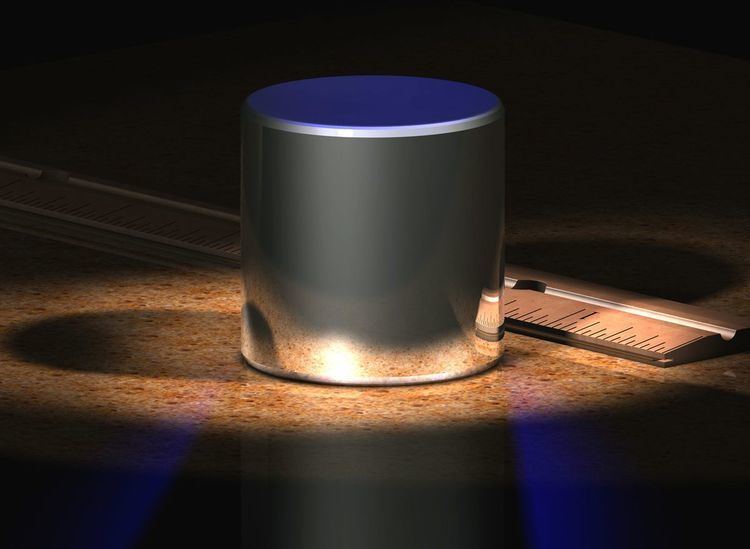 | ||
In metrology (the science of measurement), a standard (or etalon) is an object, system, or experiment that bears a defined relationship to a unit of measurement of a physical quantity. Standards are the fundamental reference for a system of weights and measures, against which all other measuring devices are compared. Historical standards for length, volume, and mass were defined by many different authorities, which resulted in confusion and inaccuracy of measurements. Modern measurements are defined in relationship to internationally standardized reference objects, which are used under carefully controlled laboratory conditions to define the units of length, mass, electrical potential, and other physical quantities.
Contents
Hierarchy of standards
There is a three-level hierarchy of physical measurement standards. At the top of the tree are the master standards - these are known as primary standards. Primary standards are made to the highest metrological quality and are the definitive definition or realization of their unit of measure. Historically, units of measure were generally defined with reference to unique artifacts which were the legal basis of units of measure. A continuing trend in metrology is to eliminate as many as possible of the artifact standards and instead define practical units of measure in terms of fundamental physical constants, as demonstrated by standardized technique. One advantage of elimination of artifact standards is that inter-comparison of artifacts is no longer required. Another advantage would be that the loss or damage of the artifact standards would not disrupt the system of measures.
The next quality standard in the hierarchy is known as a secondary standard. Secondary standards are calibrated with reference to a primary standard.
The third level of standard, a standard which is periodically calibrated against a secondary standard, is known as a working standard. Working standards are used for the calibration of commercial and industrial measurement equipment.
Working standards
Although the SI definition of the "meter" is based on a laboratory procedure combining the speed of light and the duration of a second, a machine shop will have a physical working standard (gauge blocks for example) that are used for checking its measuring instruments. Working standards and certified reference materials used in commerce and industry have a traceable relationship to the secondary and primary standards.
Working standards are expected to deteriorate, and are no longer considered traceable to a national standard after a time period or use count expires.
Laboratory Standards
National organizations provide calibration and private industrial laboratories with items, processes and/or certification so they can provide certified traceability to national standards. (In the United States, NIST operates the NVLAP program.) These laboratory standards are kept in controlled conditions to maintain their precision, and used as a reference for calibration and creating working standards. Sometimes they are (incorrectly) called "secondary standards" because of their high quality and reference suitability.
